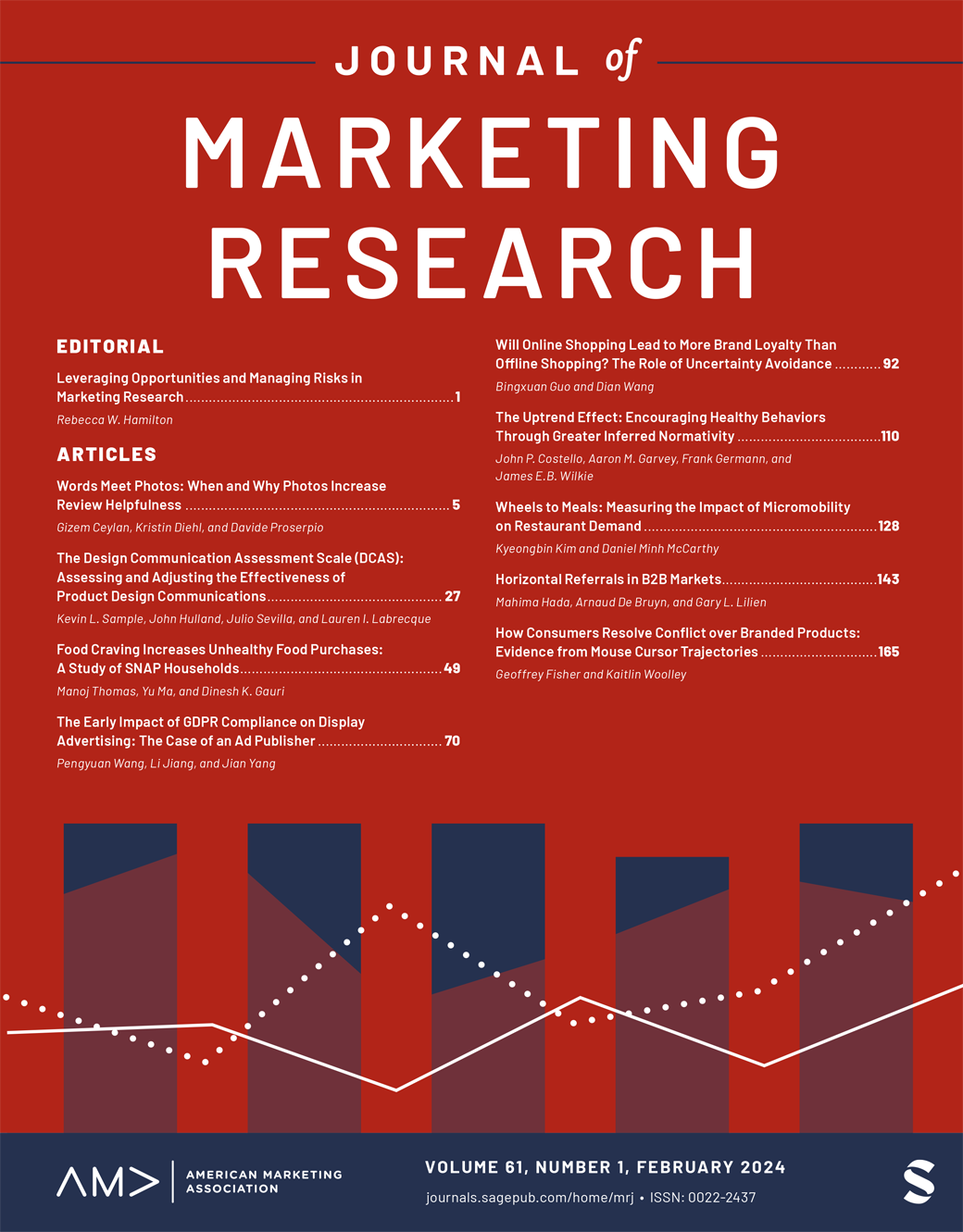快讯竞争参考效应:在公共品牌信息中提及竞争对手(与非竞争对手)可提高消费者参与度
IF 5
1区 管理学
Q1 BUSINESS
引用次数: 0
摘要
品牌在公共传播中经常提到竞争对手。然而,并非所有的竞争对手都是平等的--随着时间的推移,某些品牌对可能会形成特殊的竞争关系。本研究探讨了这些关系是否会改变品牌间传播的效果。根据竞争理论(Kilduff、Elfenbein 和 Staw,2010 年),作者区分了品牌竞争和品牌竞争,前者是品牌间基于共同历史的特殊竞争关系,后者则是品牌目前仅有相反目标的情况。一系列使用互补方法的研究(两项使用大规模 Twitter 数据的档案研究和三项预先注册的实验)提供了 "竞争参考效应 "的证据,涉及多个品牌和多个产品类别。也就是说,在公共品牌信息中提及竞争对手(相对于非竞争对手)会提高消费者的参与度。这种效应受故事嵌入度增加的影响,故事嵌入度的定义是指提及被嵌入到一个正在进行的故事中的感知。作者还显示了对购买意向的积极下游效应,并测试了两个调节因素:品牌偏好(忠诚消费者与中立消费者)和信息价值(消极与积极)。这项研究强调了品牌竞争对消费者的潜在吸引力,说明了品牌如何以及在什么条件下可以利用品牌竞争为自己带来优势。本文章由计算机程序翻译,如有差异,请以英文原文为准。
EXPRESS: The Rivalry Reference Effect: Referencing Rival (vs. Non-Rival) Competitors in Public Brand Messages Increases Consumer Engagement
Brands often make references to competitors in their public communications. Yet not all competitors are equal—over time, certain pairs of brands may develop special rivalry relationships. This research examines whether these relationships can alter the effects of interbrand communications. Drawing on rivalry theory (Kilduff, Elfenbein and Staw 2010), the authors distinguish between brand rivalry, a special competitive relationship between brands based in a shared history, and competition, a situation where brands merely have currently opposing goals. A series of studies using complementary methods (two archival studies using large-scale Twitter data and three pre-registered experiments) provide evidence for the “rivalry reference effect”, across multiple brands and product categories. That is, referencing a rival (vs. a non-rival) competitor in a public brand message increases consumer engagement. The effect is mediated by increased story embeddedness, defined as the perception that the reference is embedded within an ongoing story. The authors also show positive downstream effects on purchase intentions, and test two moderators: brand preference (loyal vs. neutral consumers) and message valence (negative vs. positive). This research highlights the potential appeal of brand rivalry to consumers, illustrating how and under what conditions brands can use their rivalries to their advantage.
求助全文
通过发布文献求助,成功后即可免费获取论文全文。
去求助
来源期刊

Journal of Marketing Research
BUSINESS-
CiteScore
10.30
自引率
6.60%
发文量
79
期刊介绍:
JMR is written for those academics and practitioners of marketing research who need to be in the forefront of the profession and in possession of the industry"s cutting-edge information. JMR publishes articles representing the entire spectrum of research in marketing. The editorial content is peer-reviewed by an expert panel of leading academics. Articles address the concepts, methods, and applications of marketing research that present new techniques for solving marketing problems; contribute to marketing knowledge based on the use of experimental, descriptive, or analytical techniques; and review and comment on the developments and concepts in related fields that have a bearing on the research industry and its practices.
 求助内容:
求助内容: 应助结果提醒方式:
应助结果提醒方式:


